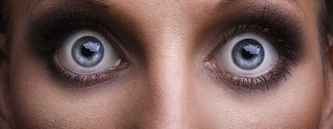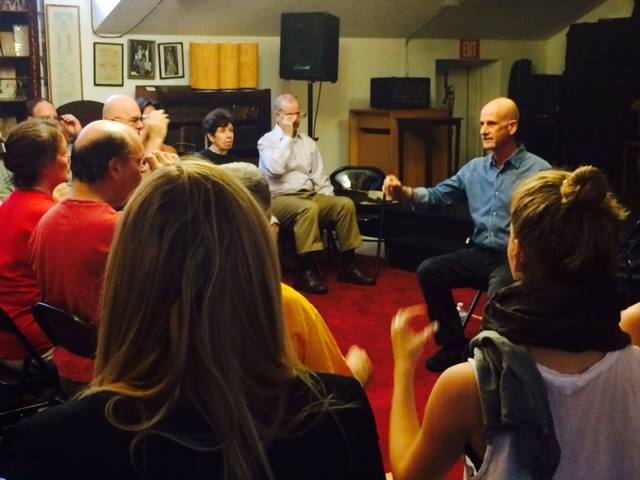 Since becoming a full-time Alexander teacher in 2003, I’ve taught the Alexander Technique in settings including classrooms, libraries, homes, cars, community centers, hospitals, physical therapy offices, health food stores, neurologists offices, music schools, music studios, office cubicles, colleges, Broadway theatres, and gyms. Today I taught the Alexander Technique in a men’s room.
Since becoming a full-time Alexander teacher in 2003, I’ve taught the Alexander Technique in settings including classrooms, libraries, homes, cars, community centers, hospitals, physical therapy offices, health food stores, neurologists offices, music schools, music studios, office cubicles, colleges, Broadway theatres, and gyms. Today I taught the Alexander Technique in a men’s room.
My student, who I’ll call Alexander, wanted guidance in putting in his new contact lenses, and suggested we use the men’s room so he could wash his hands right before this new procedure. Immediately after entering, Alexander went to wash his hands. Because our intention was to work on his contact lenses, Alexander was not paying very much attention to how he was washing his hands. It was a great opportunity for us to witness his habits while doing something we all do several times a day; standing in front of a sink. Following a brief discussion, including the Alexander Technique’s pillars of awareness, inhibition, and direction, Alexander was able to send his knees forward and his hip joints back, no longer tensing his neck. This had a noticeable affect on his breathing, making it fuller, and slower.
Next, on to the contact lenses. Alexander reached with his left hand to lift his right eyelid, holding the contact lens balanced on his right index finger. After a few times he was able to initiate the movement by leading with his fingertips instead of his shoulder. Not only did this help to make the movement more efficient, it did not put him in the position of the startle response (shoulders lifted), and it’s concurrent affect on the brain.
As Alexander got closer to the mirror to watch himself, he displayed the common habit of craning the neck. Temporarily replacing his habit, he used a combination of hinging from his atlanto-occipital joints at the top of his spine, and his hip joints at the bottom of his spine, lessening the compression. It was now time to move out of the men’s room. Alexander in the Alexander Technique studio.
Back in my studio again, Alexander and I spent some time exploring what it is like to shut your eyes, vs. allowing them to close. (We realized the similarities between the eyelids and the jaw, in that regard.) When you forcefully shut your your eyes, you are adding excessive tension to your facial muscles, and your neck. When you merely allow the eyes to gently close, there is less overall tension. If you then want to open them with your fingers, as when you put in lenses, it takes much less effort, leading to a more easeful, calmer experience, especially if you are new to contact lenses.
Feel free to leave a comment!
Do you use contact lenses?
Are you aware of how you insert and remove them?
Are you aware of what you do with your body in front of the sink?
Mark Josefsberg-Alexander Technique NYC
(917) 709-4648










Leave A Comment